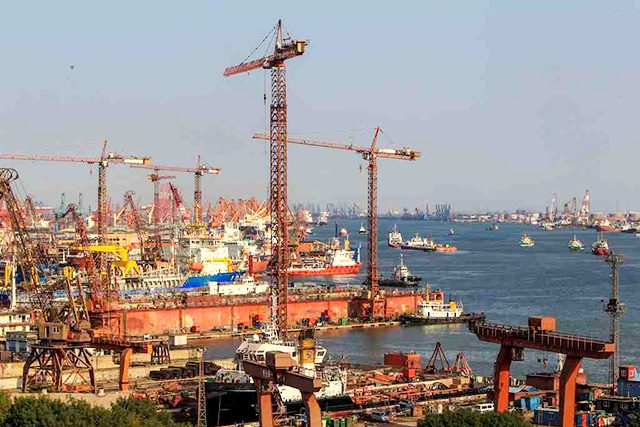SUMMARY
This is AI generated summarization, which may have errors. For context, always refer to the full article.

MANILA, Philippines – The Asian Development Bank (ADB) said in a report on Tuesday, December 8 that special economic zones (SEZs) can be a driving force for increased trade, investment, and economic reform in Asia, at a time the region is experiencing a slowdown in trade.
According to the Asian Economic Integration Report 2015 released Tuesday, the share of the Philippines’ economic processing zones (EPZs) in attracting foreign direct investments (FDIs) and in merchandise exports grew considerably.
Early EPZ performance helped fuel interest in establishing mainly private financed zones, the report said and that SEZs in the Philippines accounted for 15% of FDIs, 73% of exports, and 2% of employment.
But while the Philippines has been able to attract FDI in its zones, it “still needs to enhance benefits of technological spillovers and agglomeration – especially since enacting its more comprehensive 1995 SEZ policy,” the report said.
The Special Economic Zone Act of 1995 created “eco zones” to be managed by the new Philippine Economic Zone Authority (PEZA), and expanded incentives offered to foreign investors – “shifting focus away from government-developed EPZs to private industrial zones,” the ADB cited.
The study said that the primary effects in some economies in Asia remain “direct” effects, as spillover effects are still far from being fully realized.
Vertical expansion needed
The Asian Economic Integration Report 2015 examines current trends in trade, finance, migration, remittances, and other economic activities in the region, with a special chapter on the role of SEZs.
The report recalled that to encourage FDI despite an import-substitution regime, the Philippines established EPZs – the Bataan Processing Zone was the first (established in 1971), along with the Foreign Trade Zone Authority.
Three more EPZs followed: the Cavite Export Processing Zone in Rosario; the Mactan Export Processing Zone in Cebu; and the Baguio City Export Processing Zone.
However, expansion was horizontal rather than vertical, ADB noted.
“PEZA data show steady increases in investments, exports, and employment; although there remains a lack of vertical expansion – as the country increasingly relies on low- to medium-end services,” it added.
ASEAN lacks linkages
According to the report, “The expansion in the number of SEZs from about 500 in 1995 to over 4,300 in 2015 shows the strong and rising interest to this form of policy experiment, though the success record is somewhat mixed,” ADB chief rconomist Shang-Jin Wei said.
The report also noted that in general, the success in ASEAN has been relatively limited from a lack of linkages to the wider economy.
“There is a risk that the footloose investment these economies attract might move to other economies which have natural advantage in these activities. This calls for strong state support in boosting domestic capabilities,” it added.
But if designed right, SEZs can become drivers for increased trade, FDIs, and better economic policymaking and reforms, he added.
“Moreover, as countries develop, areas with SEZs can be transformed from mere manufacturing sites to hubs for innovation and modern services,” he added.
The report also finds that in developing Asia, countries with SEZs attract significantly more FDI, with the existence of SEZs corresponding to 82% greater FDI levels.
However, ADB said that there have also been failures, with a lack of strategic focus and regulatory and governance gaps undermining performance in some cases.
But SEZs that have done well have been able to diversify their production bases away from assembly of imported inputs, and increase sales of their own branded merchandise in domestic and global markets by building closer ties with the domestic economy.
How to make SEZs successful?
ADB said that putting in place fiscal incentives for initial investments and ensuring an adequate supply of labor, strategic locations, transport connectivity, and dependable judicial systems and institutions, such as independent governing authorities and enabling legal frameworks, are all key ingredients of successful zones.
At the same time, for zones to become a major driver of development, they must be made an integral part of a government’s national development strategy and industrial policy.
It also requires the fostering of business enabling environments which encourage firms to move up the industrial value chain and to explore growing opportunities in logistics, information and communications technology, and other areas of high technology, knowledge, and innovation, the report noted. – Rappler.com
Add a comment
How does this make you feel?





There are no comments yet. Add your comment to start the conversation.